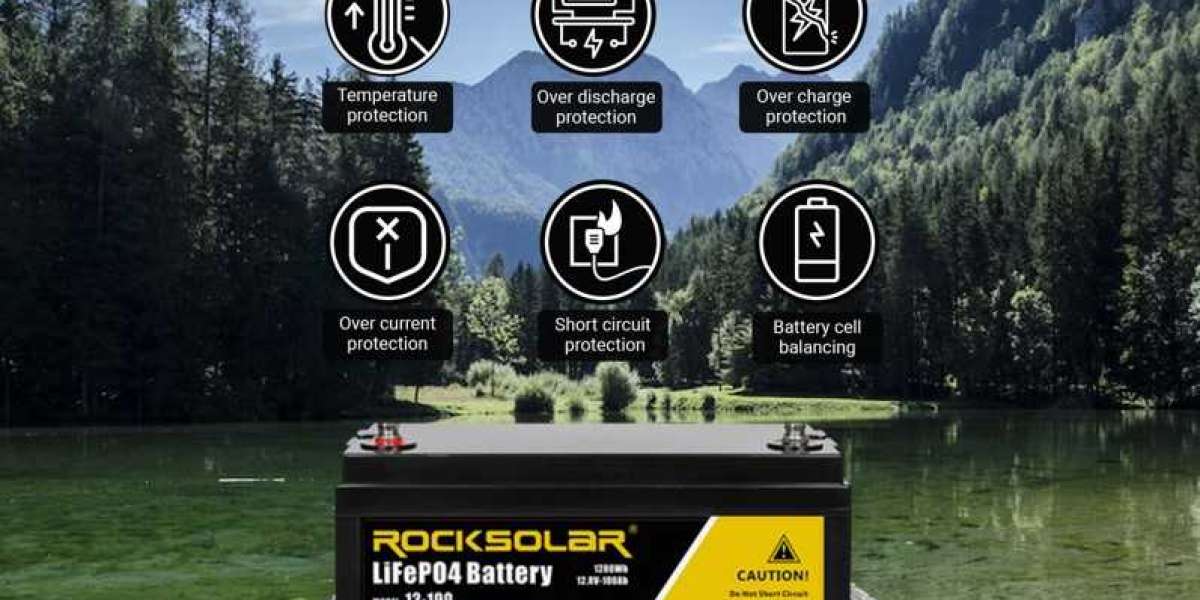Batteries are becoming increasingly important in our ever-evolving technological world. LiFePO4 batteries, or lithium iron phosphate batteries, are an especially powerful and efficient type of battery technology that has been making waves in recent years. In this blog post, we will discuss what exactly a LiFePO4 battery is, how it works, and why it's better than other types of batteries. We'll also give you some pointers on how to get the most out of your LiFePO4 battery so you can make educated decisions about how to power your electronics.By the end of this article, you'll have a better understanding of why LiFePO4 batteries are an excellent choice for powering your devices.
What is LiFePO4 battery technology?
LiFePO4 battery Technology is a type of rechargeable lithium battery that uses iron phosphate as its electrolyte. It is safe and does not harm the environment. It has a high energy density, a low self-discharge rate, and a wide temperature range, making it an excellent choice for a variety of applications, including medical devices, electric vehicles, and more. The key benefit of LiFePO4 batteries over other types of lithium batteries is their improved safety due to the robust chemistry used in their construction.
How Does LiFePO4 Battery Technology Work?
LiFePO4 (Lithium Iron Phosphate) battery technology is a type of rechargeable lithium-ion battery, which means it stores and releases energy through the movement of ions between two electrodes. It utilizes an active material composed of LiFePO4 as its positive electrode (cathode) and graphite as its negative electrode (anode). The lithium iron phosphate battery offers numerous advantages over other types of lithium-ion batteries due to their improved safety characteristics, longer cycle life, higher power density, and better thermal stability. Charging Process. When charging a LiFePO4 battery, the cathode accepts electrons from the charger while releasing positively charged ions into the electrolyte solution inside the cell. These ions then migrate to the anode, where they are stored until needed. During this process, energy is released in chemical form as heat or light that can be used to operate electrical devices such as flashlights or mobile phones. The chemical reaction also causes oxygen molecules to be released from the cathode, which are then reabsorbed by special oxygen absorbers in order to maintain a balanced state within the cell. This allows for efficient charging and discharging cycles with minimal degradation over time compared to other lithium-ion technologies. Discharging Process. When a LiFePO4 battery is discharged, the opposite of what happens when it is charged occurs: electrons move from anode to cathode, while positively charged ions move away from it and towards anodes, where they can be stored until needed again. This release of energy results in electricity being generated that can power your device or application for extended periods without having to recharge constantly like traditional lead-acid batteries require you to do so frequently in order for them not to lose their charge capacity quickly over time.
Why is LiFePO4 battery technology better?
LiFePO4 batteries offer many advantages over other battery technologies. They are lighter, more reliable, and offer higher energy density than other types of batteries. Additionally, LiFePO4 battery Canada has a longer life span than most lead-acid or lithium-ion batteries. This is due to their superior chemical stability and ability to tolerate deep discharge cycles without losing performance. Furthermore, these batteries can be recharged quickly compared to other battery technologies, making them ideal for applications where fast charging is required. The use of LiFePO4 technology offers numerous benefits in terms of cost savings and environmental protection. First off, the cost per cycle is significantly lower when using LiFePO4 technology compared to traditional lead-acid or lithium-ion-based solutions. Furthermore, because this type of battery does not require frequent recharge cycles, it has a low self-discharge rate, which leads to improved efficiency and lower maintenance costs. Finally, since these types of cells don’t contain any toxic metals such as cadmium or lead, they are far better for the environment than traditional battery technologies that rely on hazardous materials for their operation.
Are LiFePO4 batteries the best choice for marine use?
Yes, LiFePO4 batteries are a top choice for marine use due to their superior performance and durability in harsh marine environments. The LiFePO4 batteries are better than traditional lead-acid batteries because they can handle deep discharge and keep putting out the same amount of power throughout their life. This makes them perfect for marine propulsion, trolling motors, and onboard electronics. LiFePO4 batteries are also smaller and lighter than lead-acid batteries. This makes them easier to install and makes the boat lighter overall. LiFePO4 batteries are a great choice for boaters who want to upgrade their marine battery system because they last a long time, don't need much maintenance, and work better than other types.
Conclusion
LiFePO4 battery technology is a more efficient and reliable option for powering your devices than traditional lead-acid batteries. This type of battery has a longer lifespan, can be recharged faster, and provides higher performance. With so many advantages, it's no surprise that LiFePO4 batteries are gaining popularity in the market today.





